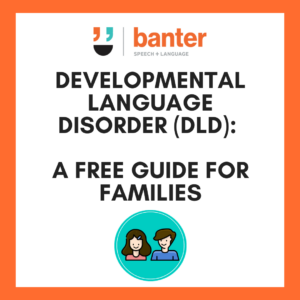We speech pathologists need to talk more about some of the long-term, negative effects of developmental language disorders. We need to explain why getting help is so important. And not just for late talking toddlers and pre-schoolers. School-age children, older children, teens and young adults, too.
One reason I think we don’t talk about long-term problems – despite knowing about most of then for over 20 years – is that we don’t want to worry parents and carers. But they have a right to know this stuff, even if it’s hard to talk about.
So here’s what some of the peer-reviewed clinical research tells us:
1. Language disorders don’t disappear when a child goes to school
- Developmental language disorders:
- are often not picked up in children (Cohen et al., 1998);
- often cause peers and others to respond negatively to the affected child (Redmond & Rice, 1998);
- can cause a child to be perceived by parents, teachers and other students as exhibiting challenging behaviours and/or emotional problems (e.g. Benner et al., 2002);
- have a high persistence rate into adolescence, particularly for comprehension of language (e.g. Clegg et al., 2005); and
- typically persist into adulthood (e.g. Johnson et al., 1999).
2. Language disorders affect social participation
- Compared with typically developing kids, children with developmental language disorders, on average:
- have fewer friends, poorer quality friendships and participate less in social activities (e.g. Durkin & Conti-Ramsden, 2007);
- are more likely to show social difficulties, including social withdrawal and difficulties joining groups of peers (e.g. Hart et al., 2004; Mok et al., 2014);
- converse less;
- have difficulty persuading others; and
- respond less sensitively to peer communications (e.g. Brinton et al., 1998; Vallance et al., 1999).
- Children and young adults with developmental language disorders:
- may withdraw socially in response to the effects of their disorder (which includes difficulty talking with others and being rejected by peers) (e.g. Hoff, 2006; Redmond, 2011);
- report higher levels of anxiety and are diagnosed with anxiety disorders more frequently than typically developing peers (e.g. Beitchman et al., 2001; Maggio et al., 2014); and
- may have deficits in social skills (e.g. Botting & Conti-Ramsden, 2008).
3. Language disorders are associated with heightened risks of social anxiety
- There is some evidence that teens with developmental language disorders have higher rates of anxiety related to social interaction and avoidance of social situations than typically developing peers (Wadman et al., 2011).
- New evidence from long-term studies suggests that young children diagnosed with developmental language disorders have higher rates of social phobia at ages 19 and report higher levels of social interaction anxiety symptoms at age 31. Despite some limitations in these studies (such as high drop-out rates), social anxiety symptoms tended to persist into adulthood, although not to the degree warranting a formal diagnosis of social anxiety disorder. In particular, young adults with a history of language disorders reported difficulties talking to others and asserting their perspectives (e.g. Brownlie et al., 2016).
4. Language disorders affect academic and work outcomes
- Children’s capacities at school entry are predictive of academic outcomes (e.g. Snow, 2006).
- Early success at school is a strong indicator of ongoing and future success (e.g. Prior et al., 1993).
- Teenagers with language disorders are at risk of poor academic progress, bullying and behavioural problems, like acting out in class (e.g. Snow & Powell, 2004).
- Lots of teenagers with language problems give up, drop out and end up in unskilled, poorly paid jobs. And teenagers with language disorders are well over-represented in the youth justice system.
- The negative effects of developmental language disorders are arguably growing, rather than dissipating:
- well-developed interpersonal communication, information literacy, critical thinking, and good writing skills are becoming more important in many modern workplaces, especially in white-collar service jobs; and
- many teens and young adults are expected to communicate regularly via SMS and social media platforms to maintain a full social life.
Clinical bottom line
For many teens and young adults, language disorders are “invisible disabilities” (Beitchman & Browlie, 2014). Having a language disorder can have big, long-term negative effects on your school, work and social participation across the lifespan. Older children and young adults affected by language disorders need to know this and get the help they need to stay engaged at school and work, and to have rewarding social lives.
Educating parents and carers of younger children with developmental language delays upfront about the longer-term issues their children may face is an important part of being a responsible speech pathologist. Even if the information is sometimes hard to discuss.
For more information on developmental language disorder (DLD), check out our free DLD guide for families:
Principal source: Browlie, E.B., Bao, L., & Beitchman, J. (2016) Childhood Language Disorder and Social Anxiety in Early Adulthood. Journal of Abnormal Psychology, 44, 1061-1070.
Image: http://tinyurl.com/z7ncjk4

Hi there, I’m David Kinnane.
Principal Speech Pathologist, Banter Speech & Language
Our talented team of certified practising speech pathologists provide unhurried, personalised and evidence-based speech pathology care to children and adults in the Inner West of Sydney and beyond, both in our clinic and via telehealth.



Leave a Reply